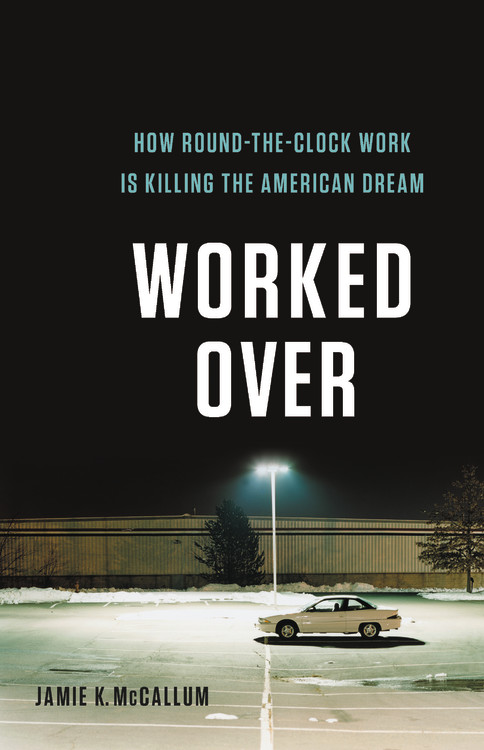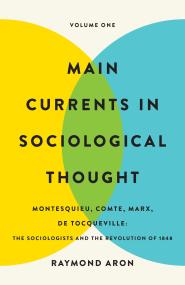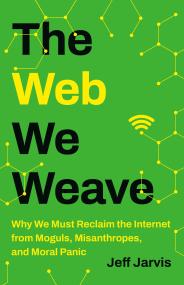Promotion
Use code BEST25 for 25% off storewide. Make sure to order by 11:59am, 12/12 for holiday delivery!
By clicking “Accept,” you agree to the use of cookies and similar technologies on your device as set forth in our Cookie Policy and our Privacy Policy. Please note that certain cookies are essential for this website to function properly and do not require user consent to be deployed.
Worked Over
How Round-the-Clock Work Is Killing the American Dream
Contributors
Formats and Prices
- On Sale
- Sep 8, 2020
- Page Count
- 272 pages
- Publisher
- Basic Books
- ISBN-13
- 9781541618343
Price
$28.00Price
$35.00 CADFormat
Format:
- Hardcover $28.00 $35.00 CAD
- ebook $16.99 $21.99 CAD
- Audiobook Download (Unabridged)
This item is a preorder. Your payment method will be charged immediately, and the product is expected to ship on or around September 8, 2020. This date is subject to change due to shipping delays beyond our control.
Buy from Other Retailers:
Popular discussions typically focus on overworked professionals. But as Jamie K. McCallum demonstrates, from Amazon warehouses to Rust Belt factories to California’s gig economy, it’s the hours of low-wage workers that are the most volatile and precarious — and the most subject to crises. What’s needed is not individual solutions but collective struggle, and throughout Worked Over McCallum recounts the inspiring stories of those battling today’s capitalism to win back control of their time.
-
“Well-written…[McCallum] explores the reasons that Americans’ work hours have been growing since the 1970s, including the gig economy and the moribund labor movement.”New York Times
-
“Workers of the country need bold ideas like those McCallum offers.”The Washington Post
-
"McCallum wants us to reignite the fight to raise wages, reduce work hours, and make work satisfying simultaneously. But, as he stresses, we must focus on the neglected aspect of time. The less time we spend at work, the more time we can spend looking for meaning where we will more likely find it -- among our families, friends, and communities."Nation
-
"McCallum's latest work stands out among a spate of recent books about the dismal conditions of workers by offering a unifying focus on employees' loss of control over their jobs.... Rich with examples of middle- and working-class responses to job-related time pressures.... Subtly drawing on classic Marxian theory that capitalism steals laborers' lives as well as their work, [it] will find a welcome audience among those concerned about global working conditions."Library Journal
-
"A thought-provoking look at the systemic problem of overworking in America."Booklist
-
"McCallum may be the only social scientist who has worked as a longshoreman on the Seattle docks and marched in a picket line with the Exotic Dancers Union at the Lusty Lady peep show in San Francisco. Drawing on such colorful experiences as well as deep scholarly research, he makes the compelling argument that Americans are losing control of their work time.... A sobering analysis of quasi-Orwellian tactics that permeate American work life."Kirkus
-
"An informative examination of the strains placed on American workers by 'overwork, unstable schedules, and a lack of adequate hours.' Interweaving anecdotes from the history of American labor with profiles of contemporary workers, union organizers, and social service administrators, McCallum lucidly explains how the current system came to be and offers hope that the resurgence of socialist principles can lead to improved working conditions.... A cogent, persuasive, and witty call for change."Publishers Weekly
-
"Jamie McCallum's sharp and clarifying analysis links workers' freedom to control work time -- and thus their lives -- to our ability to have a functioning, genuine democracy. Worked Over underscores the need for workers to have significantly more power over the anti-worker decisions currently in the hands of the corporate elite."Jane McAlevey, author of No Shortcuts: Organizing for Power in the New Gilded Age
-
"Worked Over examines an important, but little appreciated, aspect of America's out-of-control inequality: millions of Americans have scant say over when they work and how many hours they work. In this eminently readable, well-researched book, Jamie McCallum combines smart analysis, on-the-money anecdotes, and moving profiles of individual workers to explore the many ways that American workers are being squeezed by unfair, onerous work schedules."Steven Greenhouse, author of Beaten Down, Worked Up: The Past, Present, and Future of American Labor
-
"As America grew more unequal, most people's workloads just kept growing and growing -- and there was little they could do about it. Worked Over helps us see what's going on and also how we might fight against it."Bill McKibben, author of Deep Economy: The Wealth of Communities and the Durable Future
Newsletter Signup
By clicking ‘Sign Up,’ I acknowledge that I have read and agree to Hachette Book Group’s Privacy Policy and Terms of Use







